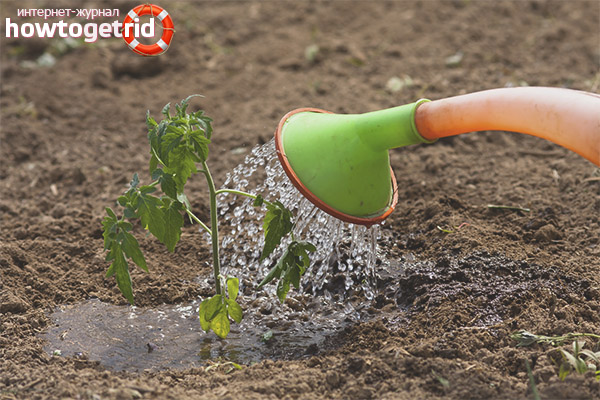The content of the article
The variety was bred in Siberia, therefore, adapted to adverse weather conditions, as well as temperature extremes. Fruits are considered universal in their methods of use, in particular, they are suitable for salads, cooking sauces and canning.
Characteristics
By the nature of growth, the bushes are determinant, plants grow to a meter in open ground and a meter and a half in greenhouses. The growth of shoots in height ends with a flower brush. In total, 5 of them can be formed. Each can grow up to 8 fruits.
For fruits, the characters are rounded, dense and smooth skin. Ripe vegetables are painted intensely red. By weight, up to 150 grams are poured. Fruits are resistant to cracking, have high transportability. Productivity is usually up to 6 kg per square meter. m
The variety is ultra-mature, so the first fruits can be removed 85-90 days after germination. Early ripening is the main advantage of the variety. A friendly return of the crop is also typical for the variety, however, the advantage is, rather, for growing for sale, rather than for one's own consumption.
Growing recommendations
It is desirable to sow with a seeding of 1-1.5 cm. After sowing, the container must be closed with a film or glass, and taken to a warm place, it is desirable that the temperature is + 22- + 25 degrees. After emergence, the film should be removed, and if possible, provide a temperature of +17 degrees (for about 5 days). After the appearance of 2 real leaves, seedlings must be peaked - planted in separate glasses. With weak growth on relatively poor soil, nitrogen-based fertilizer may be required. In this quality, potassium and calcium nitrate, Aquarin, Zdraven, as well as an extract from biohumus, for example, Gumidar, Gumistar, are suitable.
Seedlings with at least 7 leaves and a height of 20 cm are considered suitable for planting. When planting in open ground, you should choose a well-lit and windless place. If possible, it is advisable to consider the previous culture when choosing a site. So, legumes, carrots, beets, green crops, herbs are considered the most suitable precursors.
Before landing on the garden, it is recommended that humus, ash and superphosphate be added. Humus is usually offered to make 5-10 kg / sq. m. If there is little fertilizer, then the introduction of drugs into the wells is permissible. So, such fertilizers as biohumus, OMU, AVA universal 1 year, ash, superphosphate are suitable for planting.
Between the rows it is recommended to leave a distance of 50 cm and plant with such a calculation that 1 square meter. m accounted for 3 plants.
After landing care

Immediately after planting, watering is required, and preferably mulching with mowed grass or hay or peat to accumulate moisture. In addition, some gardeners recommend 12 cm hilling to stimulate the formation of subordinate roots. In the future, agronomists recommend adding soil where the sides of the beds allow. A few days after disembarkation, a garter to trellises or stakes will be required, depending on the protection of the soil.
Before flowering of the 3rd flower brush for the prevention of fatliquoring of plants, agronomists are usually advised to do without nitrogen-containing mineral fertilizers.However, with weak dressing of beds and holes, sometimes it may be necessary to use weak solutions of complex fertilizers like Fertica. After the 3 flower brush blooms, vegetable growers recommend top dressing after about 10 days. From this time, top dressing should be comprehensive. Fertilizers such as Mortar and Zdorov are usually suitable, sometimes on separate soils, especially sandy ones, it may be necessary to fertilize with magnesium sulfate and calcium nitrate. Magnesium sulfate should be added when intervein chlorosis appears, and calcium nitrate in the form of a 0.2% solution in the physiological form of apical rot of fruits.
Formation
Plant protection
Tomato plants can be affected by various diseases and damaged by some pests. Diseases can be both infectious and physiological. Infectious can be divided into fungal, bacterial, viral. To fungal infections include late blight, cladosporiosis, macrosporiosis. For prevention, it is recommended to use immunocytophytes, micronutrient fertilizers, biofungicides (Alirin-B, Bactofit) in preventive concentrations, and to suppress infections - biofungicides in therapeutic concentrations, chemical fungicides, such a 1% Bordeaux mixture, Ordan, Abiga-Peak. Viral diseases are all kinds of mosaics. Affected plants are usually incurable, and Farmayod should be used to protect neighboring plants.
Of the pests, tomato plants can be annoyed by wireworms, caterpillars of scoops, less often whiteflies and slugs. Against wireworms, you can offer biological products Nemabakt and Anthony. Only biological products (Lepidocide, Fitoverm, Baikal EM1) can be used to control caterpillars, since the pest damages the fruits themselves.
Video: Tomato Care - The First Important Steps










Submit